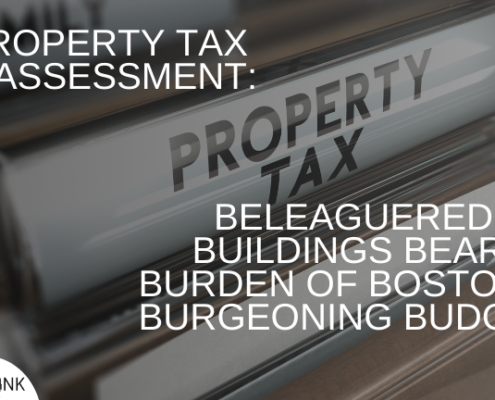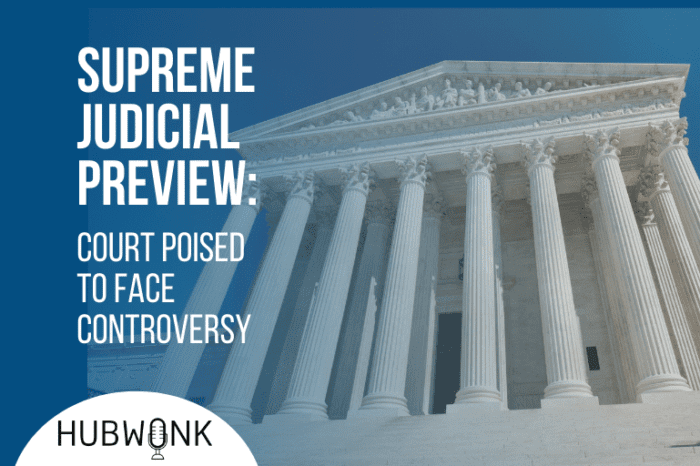Supreme Judicial Preview: Court Poised To Face Controversy
/in Featured, Podcast Hubwonk /by Editorial Staff
This week on Hubwonk, host Joe Selvaggi talks with constitutional scholar Thomas Berry about the important questions being decided in the more high profile cases facing the newly opened session of the Supreme Court. They discuss how the addition of newly appointed Justice Ketanji Brown Jackson could add a fresh perspective on the concept of originalism.
Guest:
 Thomas Berry is a research fellow in the Cato Institute’s Robert A. Levy Center for Constitutional Studies and managing editor of the Cato Supreme Court Review. Before joining Cato, he was an attorney at Pacific Legal Foundation and clerked for Judge E. Grady Jolly of the U.S. Court of Appeals for the Fifth Circuit.
Thomas Berry is a research fellow in the Cato Institute’s Robert A. Levy Center for Constitutional Studies and managing editor of the Cato Supreme Court Review. Before joining Cato, he was an attorney at Pacific Legal Foundation and clerked for Judge E. Grady Jolly of the U.S. Court of Appeals for the Fifth Circuit.
Get new episodes of Hubwonk in your inbox!
WATCH:
Read a Transcript of This Episode
Please excuse typos.
Joe Selvaggi:
This is Hubwonk. I’m Joe Selvaggi.
Joe Selvaggi:
Welcome to Hubwonk, a podcast of Pioneer Institute, a think tank in Boston. For those following the Supreme Court, last year’s session, and the attending controversies regarding race, election law, and the environment looks set to be a preview of similar questions facing the court in this session. Oral arguments that began October 3rd kicked off with spirited questions on the Voting Rights Act that had strong appeals to constitutional originalism coming not only from the court’s six conservative justices, but also from President Biden’s recent nominee, Justice Ketanji Brown Jackson. In this new session, the Supreme Court will be asked to decide questions such as what obligations states have to make voting fair, whether race can be considered in college admissions, and if the Environmental Protection Agency has an obligation to make clear rules for all to understand and follow. Indeed, this session promises to keep the Supreme Court in the public’s eye as they determine what our Constitution requires on important issues that touch nearly every American. My guest today is Thomas Berry, Research fellow in the Cato Institute’s, Robert, a Levy Center for the Constitutional Studies and Managing editor of the Cato Supreme Court Review. Mr. Berry will share with us his views on the key questions facing the new court in this upcoming session, and discuss how these decisions can serve to either reinforce or redefine how the Constitution guides our laws, our rights, and our nation. When I return, I’ll be joined by Constitutional scholar Thomas Barry.
Joe Selvaggi:
Okay, we’re back. This is Hubwonk. I’m Joe Selvaggi, and I’m now pleased to be joined by Cato Institute Research Fellow and constitutional scholar, Thomas Berry. Welcome back to Hubwonk, Tommy. Great
Thomas Berry:
To be back. Thanks for having me.
Joe Selvaggi:
Great to have you. And, and before we begin, I just wanna say I read a copy of Cato’s Supreme Court Review that you are the editor for. So, you know, for the benefit of our listeners, I just want to give a plug for what I consider to be great, great stuff. Effectively it’s a compendium of all of the cases that happened in the prior session and it’s well written and I think it’s designed for lay people like me who don’t have time to go through all the cases on their own. So before we jump into current events share with our listeners, how do you what’s the charter for that that publication and, and how do you go about building it?
Thomas Berry:
Sure. Well, it’s quite an undertaking to put it together so fast. We’re the first publication to come out with law review articles on the previous year’s term. We give our authors a mandate to not speak in legalese and to write primarily for a lay audience of educated readers. So you don’t have to be a lawyer, have a law degree to understand what they say. We say, cut out the Latin and the jargon, and we keep them shorter than most law view articles, typically 20 pages or even less. And we focus on why do these cases matter? What shift in the doctrine do they signal? What effect are they gonna have on people’s daily lives? And we admit our biases. We come at it from a Madisonian Jeffersonian separation of Powers perspective, but we don’t tell our authors, you have to agree with us on every single point.
Thomas Berry:
If we did, we would just reprint our Amicus briefs over the year. So we reach out, we invite authors who we generally agree with, and we’ll do a good job, and we let them take whatever position they want. And sometimes they write on cases where Cato did not take a position. So the Dobbs case is a paradigmatic example of that, where we did not file an amicus brief, but we have an excellent article by Evan Beek, a young superstar law professor an originalist scholar who’s quite critical of, of the reasoning in that decision. And I think that’s a, that’s a great example of what our what our publication’s all about.
Joe Selvaggi:
Wonderful. And I think is what we need. Now, when we have all these assertions of the challenging the legitimacy of the Supreme Court, I think it, it helps to renew readers respect for all the reasoning and all the thought that goes into each of these decisions. So, so let, let’s move on to current topics now but in the, in the department of, of housekeeping, you and I have met on this podcast to talk about the challenges of the Electoral Count Act, the fact that it’s a very vague and old act that encourages or perhaps helps foment some of the disagreement that we see in, in presidential elections, particularly there’s been some movement in Congress to try to fix what’s wrong with the Electoral Account Act by your estimation as someone who studies this what’s going right and what’s what perhaps is being overlooked in, in that,
Thomas Berry:
You’re right, there’s been a lot of action. The House has passed a bill co-sponsored by Zoe Rin and Liz Chaney and the Senate has a bill that was generally drafted by a working group, bipartisan working group, led by Susan Collins and Joe Mansion that’s now passed the Senate Rules Committee on a 14 to one vote. There are some significant differences with the, between the two bills, but the core of both is the same. And I think that that core is a good one, which is, it one raises the threshold for how many senators and representatives you need to bring a challenge to an electoral vote. It both clarify that the vice President has ministerial roles. So the vice President alone can’t say, I disagree with how this state conducted this, its election. I’m not gonna present these votes to Congress, or I’m gonna unilaterally veto them.
Thomas Berry:
Both make clear the Vice President can’t do that. And both of them make clear that you can’t toss out votes just because you disagree with how the state’s conducted its election, That that Congress is limited to a, a narrower constitutional role of essentially ensuring that the baseline constitutional procedures were followed in the electoral college. In my view, the House bill does a better job of getting into the nitty gritty of what exactly those legitimate reasons to toss out a vote would be. It goes through them point by point, case by case, and lists every single legitimate reason and makes clear if a reason is not on this list, it’s not legitimate, and you can’t toss out a vote for any other reason. The Senate bill doesn’t attempt to make a definitive list. It kind of borrows language from the preexisting electoral count Act.
Thomas Berry:
So in my view, it would probably be better policy long term to make a definitive list just to remove any last ambiguity. But I understand there are practical political considerations of the, the more specific your list is, the harder it is to get a consensus to agree to everything. And that’s probably why the Senate, which is a, a more of a political balancing act to get something through there with the 60 vote filibuster threshold has really been more of a, a case of political compromise. More likely than not, though the Senate bill is gonna be the, the framework that’s likely to get enacted into law.
Joe Selvaggi:
And as someone who studies this, and you identify yourself as a Madisonian constitutionalist, someone who respects state rights does it set the bar high enough for challenging election results? And or on the other side, does it take away any important election prerogative from states?
Thomas Berry:
I think it does set the bar at the right level, and I don’t think the states need to worry that it takes anything away from them. States still under the Constitution have a right to set the manner of choosing electoral votes in any way they want. It’s right there in the Constitution. A state doesn’t even have to have general election. It could have its state legislature pick them. No one state has done that in a century, but they still could. But the Constitution is specific that the federal government has the right to set the time of choosing electors. So what both of these bills make clear is that the state can’t go back after the fact after November 2nd, or whenever the general election is and say, we wanna do over, We don’t like how that went, went down. And that’s completely within Congress’s, right? And, and is in fact the right way to do things to say states. You can pick whatever procedure you want, but you have to make it clear in advance. You can’t change the rules after the game has been played.
Joe Selvaggi:
Fair enough. Perhaps we’ll revisit that one. One version of the other is actually passed. So let’s move on to our, our conversation today, specifically talking about the new Supreme Court, the new Supreme Court session. And we’ve already opened this past week with oral arguments on some of the cases. We have a new Justice Katja Brown Jackson as, as we’ve said in the past, a new, new justice means a new court. And we’ve already had some very lively oral arguments. So let’s get right, started right away with the first one I wanna talk about is Merrill will be Milligan. And this is a very important case, talking about whether it’s, in this case, the state of Alabama drew, its districts those districts were challenged by a district court as being unfairly drawn. And it got picked up to the Supreme Court to say, Okay what are the rules guiding how we draw districts? So share with our listers the facts of the case, and and we’ll go from there.
Thomas Berry:
Sure. So, in a nutshell, this is about section two of the Voting Rights Act, which has very general language, essentially saying that no one can be denied the right to equal participation in the political process on account of race. The, the details though, the nitty gritty is where it gets controversial. It’s essentially been interpreted to require that states create some number of so-called majority minority districts. So if you have a state that that’s, say 30% black, and you have say, eight congressional districts, if a state gerrymandered them in such a way that none of those eight districts was majority black that would be under current doctrine, that would be a problem under section two of the Voting Rights Act. The notion would be you’re intentionally gerrymandering them in such a way that that there’s no one district where a majority of, of black voters might pick the candidate o of their choice or of their, of their preference.
Thomas Berry:
This case, the specific facts of this case is where their Alabama is required to create a second majority black district. Essentially, a group of plaintiffs sued challenging their current map, which only has one majority black district saying it would be easy enough for you to create a second one. Alabama says, No, we’ve always had this, this general map has been the same way. It has been for about 30 years, and it’s drawn based on community cohesiveness which is also an important requirement. And one of the, there are several issues going up, both about the Voting Rights Act and about the Constitution. So the constitutional question is, okay, if the Voting Rights Act does require race conscious redistricting to this extent, to the extent that race consciousness trumps other issues like community cohesiveness, does that raise a problem under the equal protection clause of the 14th Amendment?
Thomas Berry:
Which has been interpreted in previous Supreme Court decisions to essentially have a baseline race blind sort of baseline assumption, unless you have a compelling government interest requiring you to be race conscious, to take race into account. And this is obviously a doctrine that comes up in many cases. It’s gonna come up again in the affirmative action cases later this term. But this is the first opportunity for this current court with, as you say, the new Justice Jackson to confront this question of race. When are you allowed to have a law that is race conscious under the equal protection clause?
Joe Selvaggi:
So there’s a lot to unpack there. So, again, from a layman’s perspective, there’s two views of what’s going on here. It’s either that race consciousness, I, if we wanted to aspire to color blindness and essentially draw districts with no race in mind. Some, I, I guess the defendants in this case, the state of Alabama says, Look, we, we drew these we didn’t consider race. We just considered, you know, cohesiveness. In fact, that’s what the, the Constitution mandates in my understanding of what Justice Jackson said is actually, it’s the opposite. That the, the Voting Rights Act and the Constitution even, she took what I would, what I, I heard to be an originalist perspective, that the, the intent of the writers of the 14th Amendment, the so-called reconstruction amendments, require race to be considered so as to protect those in, in a minority, particularly in that case, was Friedman or, or former slaves. Does the, you know, in your view as a scholar, does the Constitution require race consciousness when, when looking at voting rights, or does it prohibit it? I I don’t understand.
Thomas Berry:
You’re, you’re really putting me a spot that’s a question that we could have a two hour podcast on. Just that one topic. I’m hesitant, This is such a big question. I’m hesitant to take a definitive view, but I can try to eliminate at least some of the fault lines in this debate. So that, and give your, read your listeners some lines to go down in, in following this huge question. So one of the biggest, you’re absolutely right that Justice Jackson spoke the language of Originalists, and that, to me is a really big deal. However you come down on this debate that she’s engaging with the more libertarian or conservative side of the court on their own terms. She’s not primarily citing to Supreme Court precedent or just to policy. She’s looking at the, his text history and tradition of the 14th Amendment.
Thomas Berry:
And I think any originalist should be pleased by that, that that is where these debates are happening. So one big core debate in originalism is original intent of drafters versus original public meaning. And that’s something where the originalist debate has really shifted in the last 30, 40 years or so. It started much more looking at the original intent, trying to read what the framers of, be it the original Constitution or the 14th Amendment wrote in terms of what are they trying to do here? What did they expect to do? But then some people raised the legitimate concern, if something’s written by a hundred people or passed by 200 people in Congress, do they really all have the same intent? Often not. And so then people started looking to the original public, meaning what would an educated reader of English at the time have understood these words on the page to mean, regardless of what its draftee wanted it to mean?
Thomas Berry:
So Justice Jackson, look, at least in her talk from the bench and her questions, she was focusing more on the intent of the drafters of the 14th Amendment, who were absolutely very concerned with putting the Freedman the recently freed slaves back in a position of equality and full participation in society, which is Abso you know, cannot be disputed as a historical matter. Other originalists will say, regardless of the intent, they had the words on the page simply say, the equal protection of the law. And perhaps that can be interpreted, or perhaps that simply means race blindness more than race consciousness. So I’ll give one example of where, another way this could make a difference that that has come up in the past. You can make a strong historical argument that the drafters of the 14th Amendment were really only concerned with the Freedman and, and black versus white equality at the time.
Thomas Berry:
There was not a lot of thought put to other races that, especially those that would have more immigration later on, especially from China, Asian Americans. So a lot of early proto Originalists, even on the Supreme Court said the equal protection clause does not apply to Asians, because that was not the intent. It was only about black versus white, whereas a lot of modern day originalists e original public, meaning originalist would say, it doesn’t matter if they, if the drafters of the 14th Amendment held racist views about Asians, or didn’t intend it to apply to Asians equal protection, there’s no limitation in its text, and therefore it applies to every race equally so you can have. So it, there’s a lot of consequence to which theory of originalism you adopt.
Joe Selvaggi:
Well, that’s you know, again, I, I appreciate I’ve we’re, we’re dancing on landmines here, and there’s a lot, lot we could talk about. So let’s, let’s shelve that and then jump into equally related case about race. And we’re talking about, actually, it’s two cases because they’ve been separated the, the affirmative action cases against Harvard and unc. So we’ve got two different cases, slightly different fact pattern, but in a nutshell, we’re talking about is it the prerogative of, of colleges to use race as a criteria when deciding who to admit. So let’s, let’s start let’s start with Harvard. I think it’s a little more a case that’s perhaps more simple. What are the cases, what are the facts in that, that case?
Thomas Berry:
Sure. So, so in a nutshell, this, this has been an ongoing project from a, a specific group, students for fair admission challenging they’ve been looking for plaintiffs for quite a while, and they’ve, they’re really focusing on the admissions practice and the unequal effect on Asian American applicants versus other underrepresented minority groups in the admission factors. And they’re looking both at Harvard’s explicit policies in terms of affirmative race based affirmative action, but also in, in some cases even more. So, they’re looking at other factors that aren’t explicitly race, supposed to be race conscious things kind of hard to quantify, not so much numerical things such as GPA or s a t scores, but these so-called character scores, you know, leadership ability extracurriculars and such. And so they’ve been, there have been a lot of kind of requests for the internal procedures and the notes that Harvard makes.
Thomas Berry:
And what they found was a rather large, strikingly large disparity in different racial groups in terms of what’s their average score on these kind of hard to quantify character traits. And they found that Asians, in their view, suspiciously were scoring, getting very low scores compared to other races on these character traits. And so one of their arguments is that this is essentially a way in which Harvard is, is taking race into account even more than they’ve claimed publicly by, by giving disparate scores on these, on these hard to quantify character traits. And the legal claim, even though Harvard is obviously a private university, so the constitutional limitations don’t directly apply to it, but because it receives public funds, there’s a law that says that the same standards that would apply to public universities in terms of admissions apply to private universities so long as they accept these government funds. And so if this admissions procedure would violate the equal protection clause for a public university Harvard also is not allowed to do it.
Joe Selvaggi:
And so again in the interest of time, I also wanna cover University of North Carolina, similar case, but slightly different facts is gonna be heard diff separately. How, how does UNC differ
Thomas Berry:
Sim similar cases, similar case in, in many ways, UNC is a more straightforward as because it a public university. So the 14th amendment directly applies equal protection clause, obviously applies to the states. There the particular policies they may have differ. But ultimately I think it’s going to come down to the, the same constitutional question. The biggest difference, honestly, is just that Katja Brown Jackson happened to be on one of the governing boards of Harvard as a alumnus of both the undergrad and law school. So she quite rightly recused from the Harvard case, but is not recused from the UNC case. So this could create an interesting difference in the votes between the two. That’s why they were originally consolidated, but have now been split. So we’re going to get two separate oral arguments, one with Justice Jackson in attendance and voting the other with Justice Jackson not in attendance and not voting
Joe Selvaggi:
Is the case in these you know, the case four affirmative action, Is it, is it to undo past discrimination in a sense to right or wrong? Or is it instead to assert that school with a, a more diverse background, let’s say with, let’s say more black and Hispanic students and fewer Asian students, is just a better education? Is, does, do those kinds of facts enter into the argument, or is it just, you know, discrimination is, is either constitutional or it’s not.
Thomas Berry:
So under current doctrine, under current Supreme Court doctrine, it’s only the diversity rationale that can justify race conscious admissions. Now, a lot of progressive, both originalists or just progressive legal commentators in general, think that that was a wrong turn that the Supreme Court took. It goes all the way back to a concurrence by Justice Powell in the Bki case, B A K K E from the seventies, where he, at the time was the only one to rely on this diversity rationale. But then in 2003, in the gutter case Justice Sandra Day O’Connor picked up that rationale, that diversity rationale, and it got five votes at the Supreme Court. So what you’ll hear from a lot of progressive commentators is that really the more important and the more fundamental reason for race conscious admissions is to rectify both past and current discrimination that people suffer just through the course of their lives on account of race.
Thomas Berry:
But the Supreme, their, this particular case, Harvard and UNC, are not asking to revisit that, that turn, that the Supreme Court took in 2003. So they’re relying on the diversity rationale, which admittedly is, is kind of an awkward rationale to have, because in some ways it’s premised on the benefit of not the minority students. It’s premised on the notion that white students or Asian students or what have you, will benefit from being in a, in a group with a larger population a more representative of the, of the overall population of minority students. So, for better or for worse, that’s, that’s the one justification that Harvard and UNC are, are allowed to to put forward.
Joe Selvaggi:
Again, this is a case that we probably could spend a podcast just focusing on this but we’ll, we’ll try to, in this round the world, we’ll try to move on and, and then talk about a another case perhaps, I don’t know if it’s more fringe, but it’s related to our earlier talk discussion about elections. I’m speaking specifically of more the Harper where we’re talking about whether state legislators are free to make voting rules or if they’re bound by either their own judiciary or the federal government to, to make those rules share with our listeners what the, what’s at stake in this case and, and why. You know, it, it speaks to the, the current day of you know, state’s rights and voting rights and all of that sort of thing.
Thomas Berry:
Yeah. So this is a case about what’s come to be known as the independent state legislature doctrine. And that comes from the text in the Constitution. The Constitution says the times, places and manners of holding congressional elections are going to be prescribed in each state by the legislature thereof. And the question, it’s essentially a textual interpretation question. How literally do we take that word legislature? So the conventional wisdom for a while until this case in similar cases bubbled up, was it legislature is really, really just a shorthand for the law making process of a state, whatever that may be. Almost every state is modeled on the federal government. You have two houses of the state legislature, and then a governor’s veto, and then you have a state constitution, which and which has certain limitations, which the state Supreme Court can apply to particular laws.
Thomas Berry:
Strike those down if it violates the state constitution. The independent state legislature doctrine argues that no legislature isn’t shorthand for the process. We have to take it literally, it just means the state legislature. So at its most extreme, it means governor of a state is not allowed to veto laws related to congressional elections, even if he’s allowed to veto any other state law. And the state constitution does not apply, any of its limits cannot apply to laws regulating congressional elections, cuz that would be the state constitution trumping of bill passed by the state legislature. I will say it one important thing to keep in mind that on one reason why it would not be a complete sea change compared to state versus federal power, is that this does not change, even if the proponents of independent state legislature win this case completely, that does not change the relationship between the state and the federal government. So they concede that the federal constitution still has limits which justifiably can be imposed on state laws, including state laws related to congressional elections. And in fact, the text of the Constitution itself says that Congress can at any time alter those regulations about the time, place, and manner of congressional elections. So federal courts and the federal Congress would still have power, the big losers in this case, if the court adopts the independent state legislature theory would be state courts applying state constitutional law.
Joe Selvaggi:
Indeed, this is, this is a, a complex issue. Alright, so again, in the interest of time, I wanna move on to I think, which is again, these are familiar topics to those who follow the court. Speaking specifically of the discrimination or the prerogative to discriminate in the case of the 3 0 3 creative case where a woman who designs websites for weddings has asserted that it’s her prerogative to not make such websites for sames sex weddings. The case is clearly one where is she either must in the interest of protecting those who do not wanna be discriminated against or against those who want the right to to make decisions about their own own work. So share with our listeners the facts in that case.
Thomas Berry:
Yeah. So this is in many ways similar to the Masterpiece Cake Shop case, which coincidentally came from the same state, Colorado. I’m not sure why all these conflicts seem to trace back to Colorado. But as you said, this is a independent single person owned business. She essentially just started as a freelancer. What Designing wedding websites, the kind that says, you know, our story, here’s how to give us gifts and, and whatnot. And she puts her own art and she puts her own writing style into it. And the state of Colorado said that if you do not accept same sex couples and provide those same services, make websites for them as well, you’re violating the our laws that require you to essentially take all comers. If you’re a business op, open to the public, you can’t discriminate on the basis of sexual orientation.
Thomas Berry:
So what was weird about this decision at the 10th Circuit, the appellate court that, that Colorado is is a part of, is that they accepted her First Amendment argument all the way up until the very last step. They said, Yes, this website you design is your own speech. Yes, there is a First Amendment right to decide how you speak and to not be forced by the government to speak, but every right, including First Amendment rights, can be overcome by compelling government interest. That’s so called strict scrutiny test. Now, it’s very rare for a court to find that a government interest is so compelling that it’s satisfies strict scrutiny and that that over write overrules a first amendment right when that, when that right is found. But in this case, the court said, yes, there is a compelling interest. And their theory was that because she’s a right her own writer, an author, essentially an artist no one else is going to design a website in exactly the same way as she is.
Thomas Berry:
So therefore, she’s a monopoly of one. Just like no one’s gonna draw a Picasso in the same way a Picasso would, no one’s gonna write a dickens in the same way a Dickens would. No one’s gonna create a website in the same way that 3 0 3 Alanis is gonna create a website and therefore there’s a compelling government interest in ensuring equal access to the monopoly she has on her own unique art. Now this is obviously a theory that if you extrapolate it out and think about, okay, what else might that apply to you start to see how it could have large implications that, that would create a rather large exception to the First Amendment compelled speech doctrine. You know, could you apply this to artists, billboard designers pamphlet tears you know, press release writers, et cetera.
Thomas Berry:
You could have a lot of people essentially forced into writing things that go against their conscious. So gi In fact, this, this reasoning was so odd that at the Supreme Court, Colorado isn’t even asking the Supreme Court to primarily to accept the 10th Circuit’s reasoning. They’re saying, No, this isn’t, We’re not forcing her to speak at all. So don’t affirm, based on the 10th circuit’s for scrutiny theory, you should affirm primarily because we’re not forcing her to speak, we’re just forcing her to provide a service. And no one would sh think that she herself believes what she’s writing for her website. So it, this is a somewhat unusual case where the, the appellate court decision was on, on such a weird reasoning that that neither side is really defending it.
Joe Selvaggi:
So to those who, that’s, that’s the explanation of, to those who would say, Well, why doesn’t you know, why don’t those couples just find someone else to design their website? What, what the, the plaintiffs have said is she’s the only one who can do them as well as she does them. She’s, she’s the monopoly of, of, of her website. I, I would imagine, I I, for our listeners, I would think, imagine a cause that you dislike more than anything in the world. Imagine you being compelled to build a website for that cause. And not having the prerogative to say no, That to me seems very, very odd. How does this fall down along right and left or, you know, as we like to say you know, conservative progressive judges or, or does anyone take Colorado side here?
Thomas Berry:
It it’s most likely to fall around long right and left. If I had to guess, I would guess that this is gonna have a similar breakdown to the Masterpiece Cake Shop. Although that case ended up being kind of a punt at the Supreme Court, they essentially said, Well, we see some biased language in the Colorado Commission charged with enforcing this law. So we’re gonna send it back for a more non-biased procedure. But if people are interested in predicting how this is likely to go, I’d say go back and listen to the oral argument to for Masterpiece Cake Shop from a few years ago, and you’ll hear essentially the justices making the case for the respective sides of, is this compelled speech or is this not? And in fact, Justice Alito had a few hypotheticals exactly along the lines, you’re saying, imagine the thing you disagree with most. Could a Jewish baker be forced to bake a cake celebrating Crystal knocked? That was actually one of his questions at the oral argument. So I imagine I’m imagining similar hypotheticals coming from Justice Ali Alito, and the more conservative justices are gonna come this term.
Joe Selvaggi:
So again, up against the clock, I wanna make sure we get in one last case. We, again, two years in a row now talking about the epa, and it’s it’s I, I would call it maybe mission creep. The case is SACE versus e, the Environmental Protection Agency. I think these are people who had bought a house, they wanna build on it, and somehow on some moist ground the EPA has asserted that this is relating to the national waters that they’re charged with protecting. So share with our listeners to ca the facts in this case.
Thomas Berry:
Yeah. So I should disclose that the scuts are represented by Pacific Legal Foundation, which I used to work for. I have not worked on this particular case for them, but I’m friends with many of the SSTs lawyers. Cato Institute, where I currently work, did file amicus brief supporting them. So we certainly have a side in this fight. But essentially the debate is over the definition of waters of the United States in the Clean Water Act. That’s not a term that’s defined any deeper than that. So what is a water? The EPA says that it’s any moist ground, as you put it, that has a significant nexus to a larger navigable water. So their theory is if your backyard is sometimes a marsh or a swamp, even if it’s just in the summer, and animals or, or could migrate between you and say, a nearby lake or evaporation patterns or underwater groundwater could mix the two.
Thomas Berry:
Essentially if you’re if your backyard, the marsh in your backyard could have any effect on the nearby larger navigable water, body of water, that’s enough for you to fall under the jurisdiction of the Clean Water Act. The sockets are asking for a more bright line rule. They’re asking for a rule that would be easier for someone to tell whether they pass it just by using their own eyes. They’re saying no waters have to be continually touching each other. So you have to find just using your own eyes, surface water connection between whatever water may be in your backyard and the nearby River Lake stream, whatever it is that the APA unquestionably does have jurisdiction over. So this difference between the two tests is gonna make the difference in this case, because the Sack’s own backyard is separated by a road from the river that leads into nearby priest Blake in Idaho, which no one disputes the EPA has jurisdiction over. And in my view, the biggest strength of the Sack’s test is just how much easier it is to apply, because you really see the flaw here. This case is dragged on 16 years, and we still don’t have a decision over whether they can build in their, in their own lot or not. And you just can’t have, you know, cases like this dragging on for decades and people spending thousands of dollars just to find out whether the law applies to them or not.
Joe Selvaggi:
Yeah, this seems like a deeper case, I think, to, to if someone takes just a cursory look at this, it’s sort of a someone protecting the environment versus someone who wants to destroy the environment. But instead, I think what they’re making the case is as citizens, we should know the rules before we play the game so that if if the rules are clearly laid out, we can follow them. If they’re in the mind of an EPA administrator and there seemed to be somewhat ephemeral to use a environmental stream term nobody can follow the rules because nobody knows what the rules are. I, is that the essence of, of what we’re dealing with here?
Thomas Berry:
Yeah, that’s really the core of the, of the Sacks argument is that it, significant nexus is essentially in the eye of the beholder. And once again, back to the theme of a single concurrence causing create confusion. I talked about Justice Powell’s Bki concurrence was the origin of the diversity rationale where, Well, the significant Nexus test is just Justice Kennedy’s concurrence in a case called Rapanos, another Pacific Legal Foundation case from 2006. So for justices essentially wanted the test that the sockets are putting forward now four wanted an even broader test, and Justice Kennedy alone said significant nexus. And now we’re back at the Supreme Court essentially because no one has known, figured out a way to reconcile that Kennedy concurrence with the four justice plurality, and we essentially have to pick one test or the other. Now, we can’t, we can’t continue with confusion about which one applies
Joe Selvaggi:
Is the epa. Again, I mentioned mission creep. Is this a broader issue of, let’s say executive branch agencies just sort of growing naturally with, with no box to contain them? Is, is this, you know, sort of, is this what without guidance from the courts, isn’t this what administrative agencies naturally are inclined to do?
Thomas Berry:
Well, certainly the EPA has, has taken as aggressive attack as it possibly can in several rule makings. It’s taken an expansive view, though you also have a case of, of the party and power has a big effect. So we’ve also seen some flip flopping back and forth where when republicans were in power, they kind of mandated EPA to take a narrower view of, of its powers. So you can also make a case here that it’s better for the courts to select one specific policy rather than essentially having the EPAs interpretation of the law flip fla back and forth with, with every presidential election, that you don’t have predictability or consistency in that way either. And this is fundamentally a, a legal interpretation question, What is Waters of the United States mean? The fact that administrations have flip flopped back and forth shows that the EPA isn’t really doing statutory interpretation when it picks one of these tests. It’s, it’s doing policy making.
Joe Selvaggi:
Indeed. And I would say, you know, rules is rules, right? We would, you know, for those of us who worry about politics intervening or in blurring lines, if rules written down it’s easier for everyone to follow and, and harder for politicians to bend, I would say to those listening who are environmentalists who, who say, Look, the EPAs their heart’s in the right place they should be allowed to do whatever’s necessary. I I wonder if we, we imagine a different scenario where we assert that, let’s say the US military is chart tasked with keeping us all safe there, therefore they should go ahead and on whatever military venture they see Ed worthy of keeping us fit. No one would buy into that. And yet we just imagined the EPAs whatever they think is best, must be best. It seems to me an odd, odd confidence in, in in let’s say executive prerogatives.
Thomas Berry:
Yeah, for sure.
Joe Selvaggi:
Okay. Well, thank you Tommy, this has been a lot to, lot to digest. Lot to look forward to perhaps maybe at the end of this session, you, we can reconvene and, and see how things went, see which way the chips fell, and see what, what country we’re living in.
Thomas Berry:
Absolutely. That would be great.
Joe Selvaggi:
Thank you, Tommy. Thank you.
Joe Selvaggi:
This has been another episode of Hubwonk. If you enjoyed today’s show, there are several ways to support how Won and Pioneer Institute it would be easier for you and better for us. If you subscribe to Hubwonk on your iTunes podcast catcher, it would make it easier for others to find Hubwonk if you offer a five star rating or a favorable review. We’re grateful if you share Hubwonk with friends. If you have ideas or suggestions or comments for me regarding future hub long episodes, you’re welcome to email me, hubwonk@pioneerinstitute.org. Please join me next week for a new episode of Hubwonk.
Recent Episodes
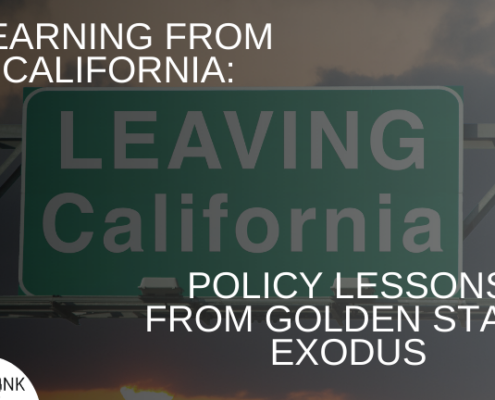
Learning From California: Policy Lessons From Golden State Exodus

New England Short Circuit: Distorted Incentives Drive Energy Prices Up and Reliability Down

Controlling Drug Prices: Costs and Benefits of Direct Negotiation with Big Pharma
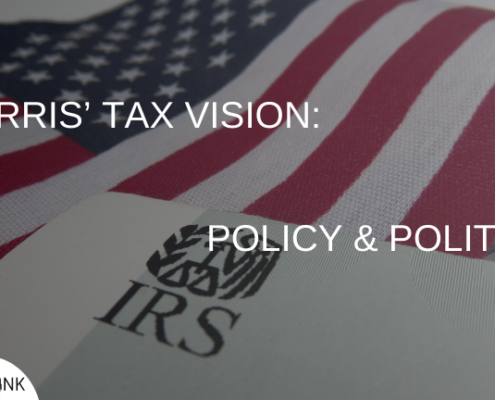
Harris’ Tax Vision: Policy & Politics
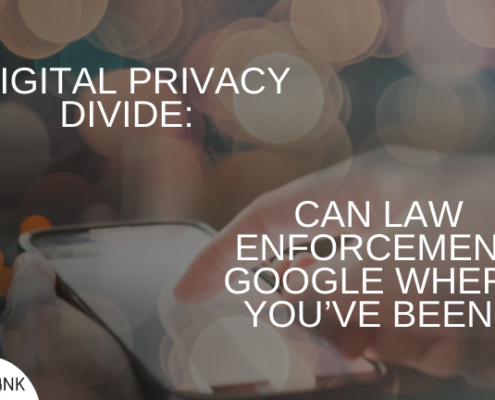
Digital Privacy Divide: Can Law Enforcement Google Where You’ve Been?
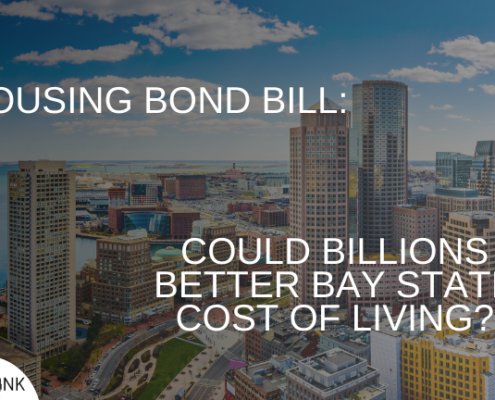
Housing Bond Bill: Could Billions Better Bay State Cost of Living
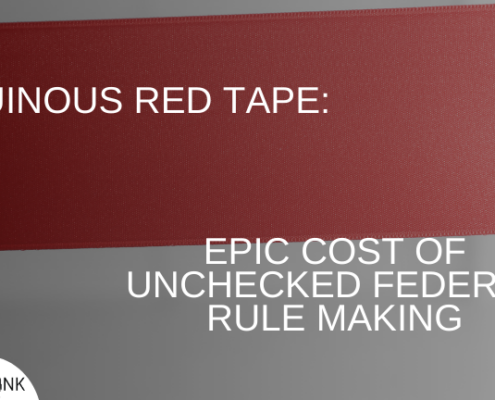
Ruinous Red Tape: Epic Cost of Unchecked Federal Rule Making
